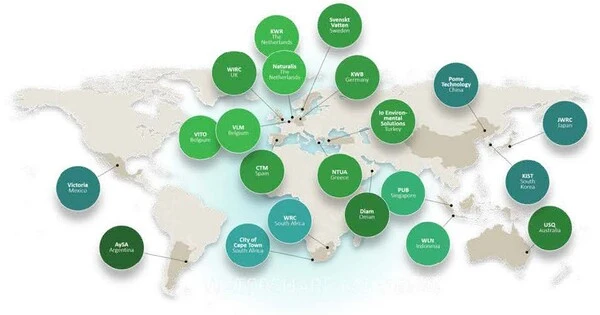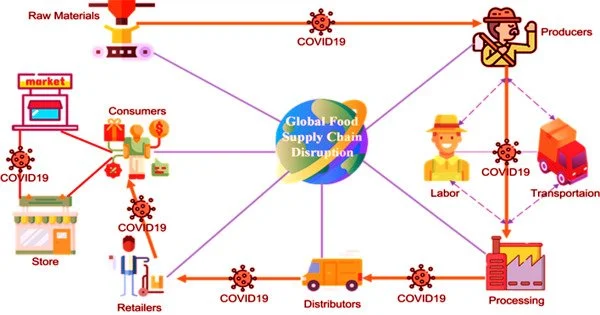According to studies that employed supercomputer models of water supply in the North Carolina Research Triangle, inter-utility water agreements can help alleviate hazards. The findings can be applied to any location where water providers confront financial and supply issues when allocating regional water.
The saying “Whisky is for drinking, and water is for fighting over!” is ascribed to Mark Twain. But, in the case of urban water utilities, what if collaboration was more beneficial than going it alone?
A new study of water supply in the North Carolina Research Triangle discovered that water utility agreements can help decrease concerns. The research made use of supercomputer allocations on the Texas Advanced Computing Center’s Stampede2 system provided by the National Science Foundation’s Extreme Science and Engineering Discovery Environment (XSEDE).
The findings are applicable to any location where water suppliers allocate regional water resources among consumers that confront supply and demand difficulties, as well as challenges in financially funding infrastructure investments.
“We discovered that collaboration among utilities can benefit both their water supply and financial demands when compared to more traditional independent planning and administration,” said David Gorelick, a postdoctoral research associate at the University of North Carolina, Chapel Hill. Gorelick works at the Center on Financial Risk in Environmental Systems, which is part of the Department of Environmental Sciences and Engineering at the Gillings School of Global Public Health.
The work was published in Water Resources Research, an American Geophysical Union journal. The authors began with a computer model created in collaboration with North Carolina regional utilities.
We discovered that collaboration among utilities can benefit both their water supply and financial demands when compared to more traditional independent planning and administration.
David Gorelick
“Their participation gives us a lot of confidence that our findings will be used at least to inform their behavior and to help avoid some more significant pitfalls when it comes to making big, long-term, hundred-million-dollar financial decisions about water infrastructure like new reservoirs or wastewater treatment plants,” Gorelick said.
Their risk management and long-term infrastructure development decisions are accurately simulated by the model till 2060.
“This work is not possible without XSEDE supercomputing resources,” said study co-author David Gold, a PhD candidate in the Department of Civil and Environmental Engineering at Cornell University.
Gold and colleagues evaluated the water supply system of the North Carolina Research Triangle of about two million residents, bounded by Chapel Hill, Durham, and Raleigh, over millions of future states out to 2060. This allowed discovery of water management strategies that are robust to a broad set of future conditions.

“We’re flying blind in terms of how the water supply system reacts to different types of uncertainties, whether it’s population increase or changing climate,” Gold said. “Being able to use Stampede2 has been extremely beneficial to us,” Gold added. “If we tried to perform these simulations on our PC, it would take us almost 15 years to complete all of the simulations that we did using Stampede2 in just a few hours.”
Using the WaterPaths stochastic simulation software, a utility planning and management tool, a utility-scale computer model of the region was created. The risk of failure was developed using reservoir capacity dynamics that alter depending on hydroclimatic conditions, human demands, and management decisions that integrate weekly portfolio management with long-term annual infrastructure investments.
Some of the dangers of inter-utility agreements include asymmetric partner development and the inflexibility of the agreement structure itself to adjust to supply and demand fluctuations. Surprisingly, the authors expected that more flexible agreements would benefit partners more by allowing them to adjust to changing circumstances.
“In fact, we found that utilities experienced more financial risk in these cases,” Gorelick said. The study found that with less flexible agreements, utilities are limited to mitigating their own risks. But when agreements can be updated over time, each utility is more exposed to the risks and the uncertainties of their partners.
“We found that cooperation is a good thing. But the type and the manner in which cooperation occurs can be very important for water utilities, and thus the water rates that all of us pay to get our water bills,” Gorelick said.
A fixed allocation agreement, such as one for a new reservoir or wastewater treatment plant, is a simple example of an agreement explored in the study. Because towns and local governments in the United States can adopt inter-local agreements, utilities can collaborate and be assigned fixed allocations of storage or treatment capacity in a shared project from the start.
If one utility, for example, pays for 20% of the plant’s development, they are entitled to use 20% of its capacity. “The reason these kinds of agreements important, and why we wanted to test at least a couple in this study,” Gorelick explained, “is that they are pervasive and very adjustable from place to place.”
So yet, very little study attempts have been made to evaluate their performance in terms of utility supply and financial objects.
Gold stated: “Our water systems are facing more problems than ever before. However, in terms of supercomputers, we now have tools that we have never had before. We can level the playing field by utilizing resources such as those offered at XSEDE. When we consider the challenges and uncertainties posed by population growth and changing climate, these computer resources provide insight into the potential effects of these changes as well as assistance in developing sustainable management strategies that can ensure the reliability of our water supply for years to come.”
















